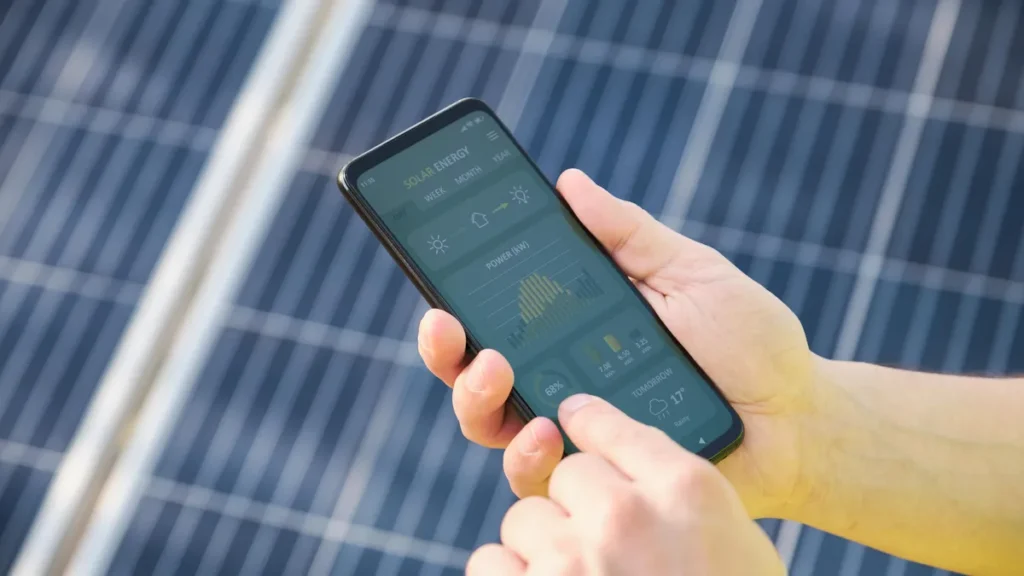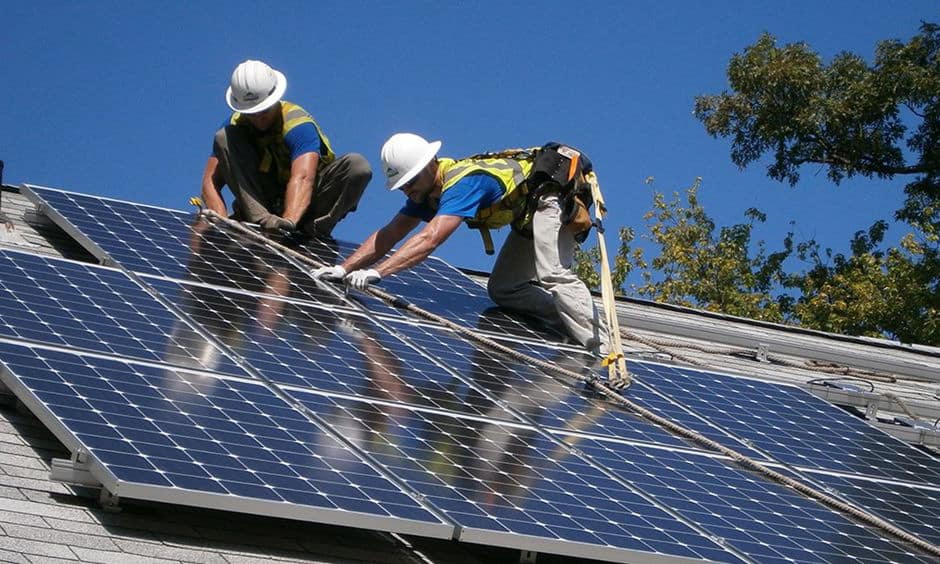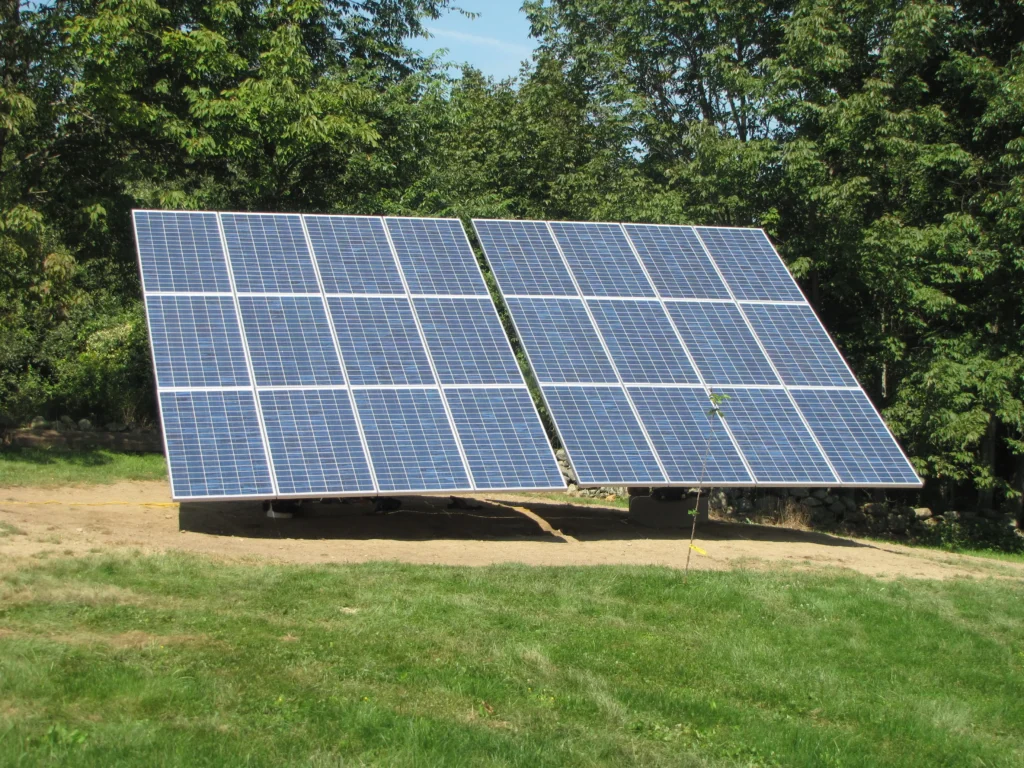Hey there! So, you’re thinking about going solar? That’s awesome! Solar panels are a fantastic way to harness the power of the sun and reduce your carbon footprint. But you might be wondering, “How long is this whole installation process going to take?” Well, my friend, grab a cup of coffee and let’s dive right into the electrifying world of solar panel installations.
Understanding Solar Panels
Before we jump into the installation timeline, let’s quickly understand the magic behind solar panels. These technologically advanced devices work like superheroes in disguise, absorbing sunlight and converting it into clean and renewable electricity. They consist of photovoltaic cells that convert sunlight into energy. Pretty cool, right?
There are a few types of solar panels out there, but the most commonly used ones are monocrystalline and polycrystalline panels. Monocrystalline panels are made from a single crystal structure and tend to have a higher efficiency rate. Polycrystalline, on the other hand, is made from multiple silicon crystals and is slightly less efficient but more cost-effective. You’ll also find thin-film panels, which are flexible and lightweight, making them a great option for certain installations.
Factors Affecting Solar Panel Installation Time
Okay, now that we’ve got the solar panel basics down, let’s talk about the factors that influence the installation time. Remember, not all installations are created equal, and various factors can affect how long it takes to get those panels up and running.
System Size and Complexity
Just like a jigsaw puzzle, the size and complexity of your solar system can impact how long it takes to piece it all together. A small residential system with a few panels can typically be installed in a matter of days. However, larger or more complex systems, such as those for commercial properties or off-grid installations, may require more time and expertise.
Roof Type and Condition
Now, pay attention to your roof! Different roof types require different installation techniques. If you have a sloped roof, installing solar panels may be a bit easier. However, if you have a flat roof, additional racking and mounting options might be needed. The condition of your roof is also crucial. If repairs or reinforcements are needed, that could extend the installation timeframe.
Availability of Sunlight
Solar panels need sunlight to do their thing, right? So, the availability of sunlight in your region can influence how long it takes to install them. Areas with lots of sunny days year-round often have experienced installers readily available, making the process smoother and faster. On the other hand, if you live in a region with constant thunderstorms or limited sunshine, the installation might take longer due to weather constraints.
Local Regulations and Permits
Ah, bureaucracy! Don’t worry, though, we’ll get through this together. Each city and region has its own set of regulations and permit requirements for solar installations. Getting the necessary approvals can take some time, especially if there are specific rules or paperwork involved. Make sure you budget a bit of extra time for this part of the process.
Hiring a Professional vs. DIY Installation
You have a choice, my friend: do you hire a professional installer or dive into the DIY world? Hiring a professional can save you time and ensure a proper installation. They have the experience, tools, and knowledge to get the job done efficiently. But if you’re feeling adventurous and confident in your skills, a DIY installation could be an option. Just keep in mind that it might take longer, especially if you’re learning the ropes along the way.
What is the Typical Timeline for Training and Certification to Become a Solar Panel Installer?
The typical timeline to learn solar panel installation can vary depending on the program or course. Some intensive training programs can be completed in as little as a few weeks, while others may take several months to a year to earn certification. It’s important to research options to find the best fit for your goals and schedule.
Steps Involved in Solar Panel Installation
Alright, let’s get down to business and break down the different steps involved in the solar panel installation process. Each step takes time, so stay patient and trust the process.
Initial Site Visit and Assessment
First things first, a solar installer will visit your home or business to assess the site’s suitability for solar panels. They’ll evaluate factors like roof orientation, shading, and available space. Trust them; they know what they’re doing!
System Design and Engineering
Next, the installer will design your solar system to ensure it meets your energy needs. They’ll calculate the optimal number of panels, placement, and tilt angle to maximize solar exposure. Designing your superhero solar system might take a little time, but it’s worth it!
Obtaining Permits and Approvals
Remember those local regulations and permits we talked about earlier? Well, now is the time to tackle them. The installer will handle the paperwork, submit applications, and wait for the green light before moving forward. Just sit tight and let them take care of it.
Ordering and Delivering Equipment
Once the design is finalized and the permits are sorted, it’s time to order the solar equipment. The panels, inverters, racking, and other components will be delivered to your doorstep. It’s like Christmas morning for green energy enthusiasts!
Preparing the Roof for Installation
Before the actual installation takes place, the roof needs some love. The installer will inspect and prepare the roof by ensuring it’s structurally sound and capable of supporting the weight of the solar panels. If any repairs or reinforcements are necessary, they’ll take care of it.
Mounting the Panels
Woohoo! This is the exciting part. The installer will mount the solar panels onto your roof using special racks or fixtures. They’ll secure everything in place, making sure your panels are ready to soak up the sun’s rays.
Electrical Wiring and Connection
To complete the installation, the solar panels need to be connected to your electrical system. The installer will carefully wire everything up, ensuring proper connections and safety protocols are followed. Remember, safety first!
Testing and Commissioning the System
Almost there, my friend! The final step is to test the system and make sure everything is functioning as it should. The installers will inspect the electrical connections, run performance tests, and ensure you’re getting the maximum energy output from your panels. Hurray!
Now that you have a good grasp on the solar panel installation process and what factors can impact the timeline, you’re well-equipped to embark on your solar journey. Whether you choose to hire a professional or take on a DIY adventure, solar panels are an amazing investment that will ultimately save you money and contribute to a greener world.
Stay tuned for part two, where we’ll give you a breakdown of the estimated timelines for residential and commercial solar panel installations, so you can plan accordingly. Ready for more solar power knowledge? Let’s go!
Alright, let’s continue with the second part of our blog post on solar panel installations!
Timelines for Solar Panel Installation
Now that you’re all set to go solar, let’s dive into the estimated timelines for residential and commercial installations. Remember, these timelines can vary depending on the factors we discussed earlier, but they’ll give you a good idea of what to expect.
Residential Installations
For most residential installations, the process typically takes anywhere from one to three months. Here’s a breakdown of the estimated timelines:
Initial Site Visit and Assessment: 1-2 weeks
During this stage, the solar installer will visit your home, assess your roof’s condition, evaluate the available space, and determine your energy needs. They’ll make sure the site is suitable for solar and gather the necessary information for system design.
System Design and Engineering: 1-2 weeks
Once the assessment is complete, the installer will design your solar system, considering factors like roof orientation, shading, and your energy consumption patterns. This step ensures the system is tailored to your specific needs and maximizes solar output.
Obtaining Permits and Approvals: 2-4 weeks
The time required for obtaining permits can vary depending on your location and the efficiency of the permitting process. The installer will handle all the paperwork, submit applications to the relevant authorities, and await approval. Patience is key here!
Ordering and Delivering Equipment: 1-2 weeks
After receiving the necessary permits, the installer will order the solar equipment required for your system. The delivery time can range from a few days to a couple of weeks, depending on availability and supplier lead times.
Preparing the Roof for Installation: 1-2 weeks
Before the actual installation starts, the installer will ensure your roof is ready to support the solar panel system. This may involve minor repairs, reinforcement of the structure if needed, and checking the integrity of your roof’s surface.
Mounting the Panels: 1-2 days
Ah, the moment you’ve been waiting for! During this step, the installer will mount the solar panels on your roof using specialized racks or fixtures. They’ll make sure each panel is securely fastened and positioned for optimal solar exposure.
Electrical Wiring and Connection: 1-2 days
Once the panels are up and shining, the installer will handle the electrical wiring to connect your solar system to your home’s electrical setup. This ensures that the solar-generated electricity can be used by your household appliances and fed back into the grid if you have a grid-connected system.
Testing and Commissioning the System: 1-2 days
Last but not least, the installer will conduct rigorous testing to ensure your solar panels are functioning correctly and safely. They’ll run performance tests, measure energy output, check system efficiency, and make any necessary adjustments to optimize performance.
And voila! You’re now harnessing the power of the sun and generating clean, renewable energy for your home!
Commercial Installations
Commercial solar installations are generally more complex and larger in scale than residential ones. As a result, the timelines for commercial projects can vary significantly depending on the project’s size and scope. Here’s a rough idea of what to expect:
Initial Site Visit and Assessment: 1-2 weeks
Just like with residential installations, the installer will visit the site and assess its suitability for solar panels. They’ll evaluate factors like roof condition, available space, shading, and energy needs specific to the business.
System Design and Engineering: 2-4 weeks
Commercial solar systems require more design work due to their scale and complexity. The installer will carefully analyze the energy consumption patterns of the business, design a system that meets those demands, and optimize it for maximum solar energy production.
Obtaining Permits and Approvals: 4-8 weeks
Permitting for commercial solar installations can be a lengthy process, as larger projects often involve additional safety and structural reviews. The installer will handle all the necessary paperwork, submit applications to the relevant authorities, and patiently wait for the green light.
Ordering and Delivering Equipment: 2-4 weeks
Depending on the size and complexity of the commercial project, the procurement and delivery of the solar equipment may take longer. Specialized panels, inverters, and racking systems might be required, and their availability could affect the timeline.
Preparing the Roof/Installation Site: 2-4 weeks
Before the installation begins, the installer will prepare the roof or the installation site, ensuring structural integrity and assessing any additional requirements. Large-scale commercial installations may involve ground-mounted systems instead of roof-mounted ones, which requires additional groundwork.
Mounting the Panels: 1-4 weeks
Installing the panels for commercial projects can be time-consuming due to the larger number of panels involved. The installation crew will work diligently to mount and secure each panel properly while maintaining all safety standards.
Electrical Wiring and Connection: 1-2 weeks
Connecting a commercial solar system to the electrical infrastructure of a business can take a bit longer. Coordination between the solar installer and local utility companies may be necessary to ensure a smooth connection and integration with the electrical grid.
Testing and Commissioning the System: 1-2 weeks
Similar to residential installations, commercial projects undergo thorough testing and commissioning to ensure all components are functioning optimally. This step involves final system checks, performance tests, and adjustments if needed.
The installation process for commercial solar projects tends to be longer due to their larger scale and potential complexities. However, the benefits and energy savings your business will enjoy in the long run are worth the wait.
Okay, my friend, we’ve covered a lot of ground in this blog post, from understanding how solar panels work to the factors affecting installation time and the step-by-step process. In the next part, we’ll discuss the pros and cons of hiring a professional installer.
Hiring a Professional Solar Panel Installer
Alright, it’s decision time. When it comes to solar panel installation, you have two main options — hiring a professional installer or going the DIY route. Let’s dive into the pros and cons of hiring a professional and help you determine if it’s the right choice for you.
Pros of Hiring a Professional Installer
Expertise and Experience
Professional installers have the knowledge and experience to handle the complexities of solar panel installations. They understand the technical aspects, safety protocols, and local regulations involved, ensuring a smooth and efficient installation process.
Time and Efficiency
When you hire professionals, they take care of everything from start to finish. They handle all the paperwork, permits, equipment procurement, and installation, saving you valuable time and effort. They know the best practices and can complete the installation within a reasonable timeframe.
Quality Assurance
Professional installers are trained to deliver high-quality work. They follow industry standards, use the correct equipment and materials, and ensure that the system is installed safely and effectively. This means you can have peace of mind knowing your solar panel installation is in capable hands.
Warranties and After-Sales Support
Reputable solar installers often provide warranties on both the equipment and their workmanship. This means that if any issues arise after installation, they’ll take care of it at no additional cost. Additionally, they can provide ongoing maintenance services and support to optimize your system’s performance.
Access to Rebates and Incentives
Professional installers are well-versed in solar rebates, incentives, and tax credits available in your area. They can help you navigate through the paperwork and ensure you take full advantage of all the financial benefits associated with going solar.
Cons of Hiring a Professional Installer
Additional Cost
Hiring professionals does come with a higher upfront cost compared to a DIY installation. However, it’s important to consider the value they bring in terms of expertise, time savings, and quality assurance. The long-term benefits and peace of mind often outweigh the initial expense.
Limited Control
When you hire a professional installer, you’re putting your trust in their expertise and experience. While this can be a positive aspect, some individuals prefer having full control over the installation process. If you’re a hands-on type of person, DIY might be more appealing to you.
Scheduling and Availability
Depending on the demand for solar installations in your area, professional installers may have busy schedules. This means you might have to wait for a slot to open up, which could delay your installation. Be sure to consider the availability of installers when planning your timeline.


